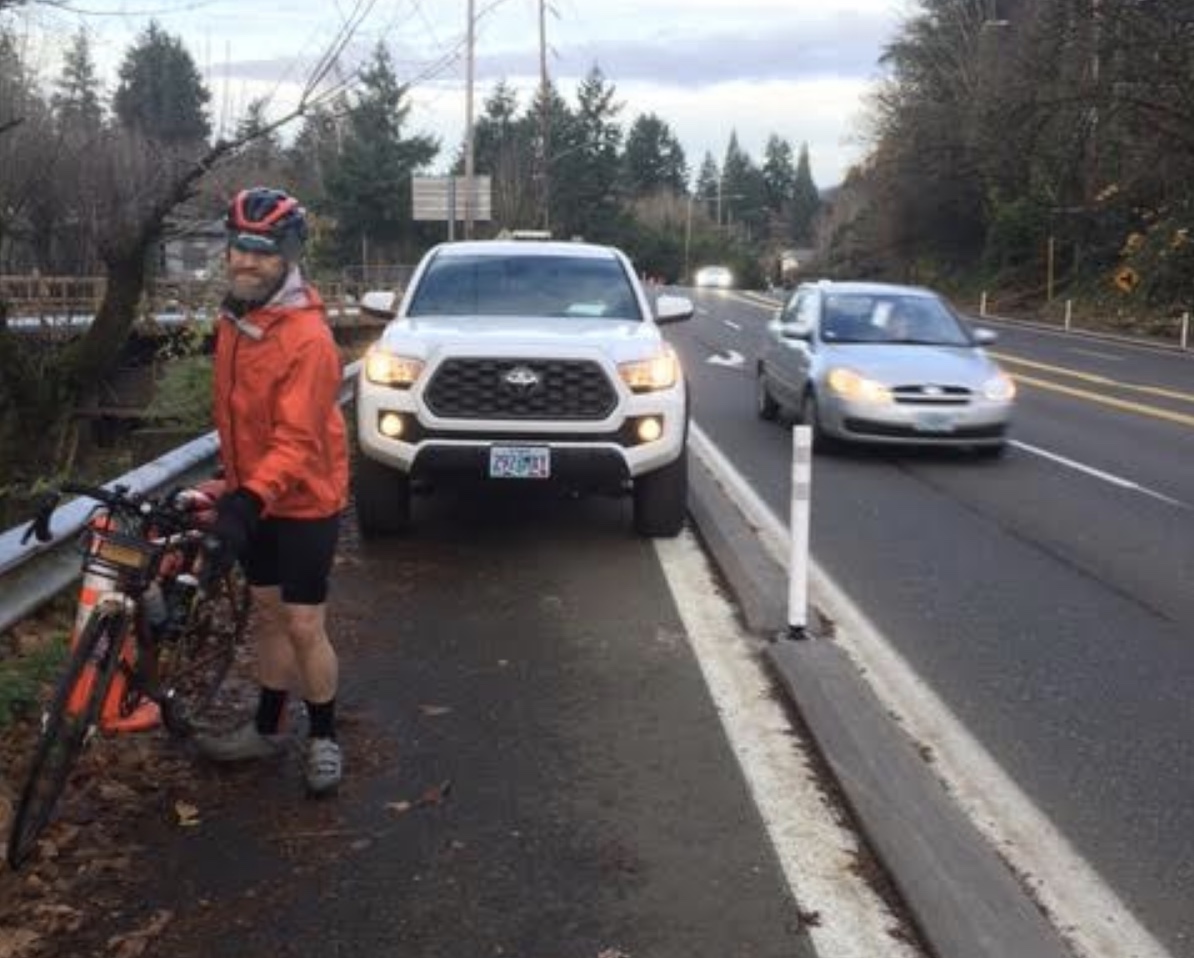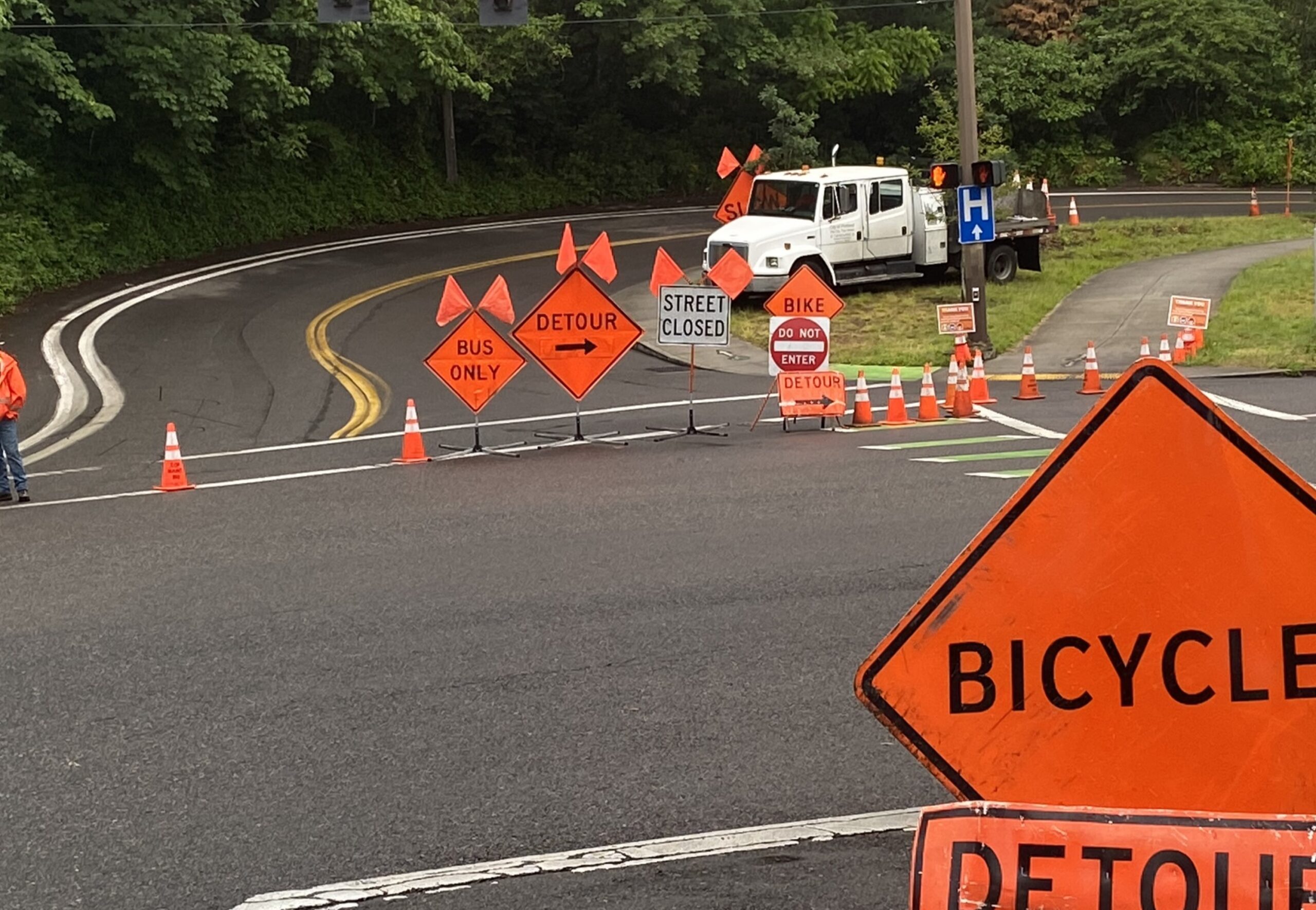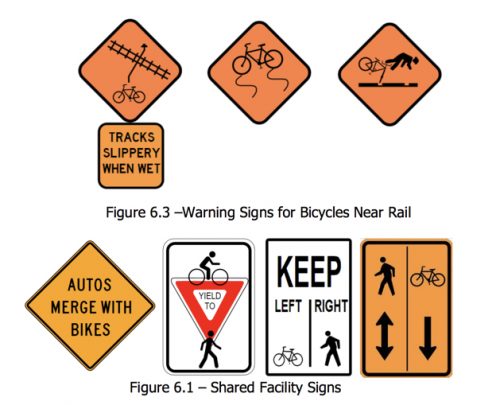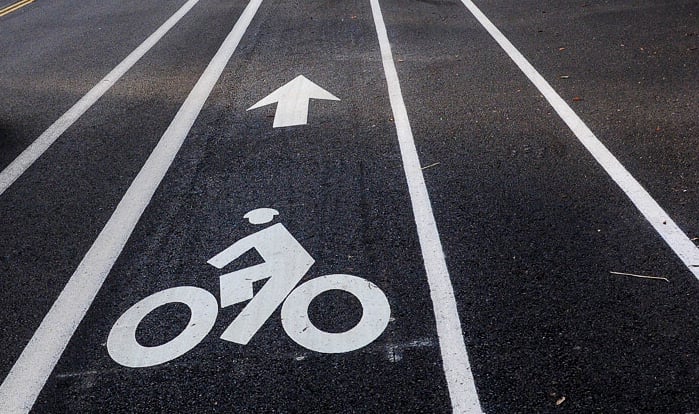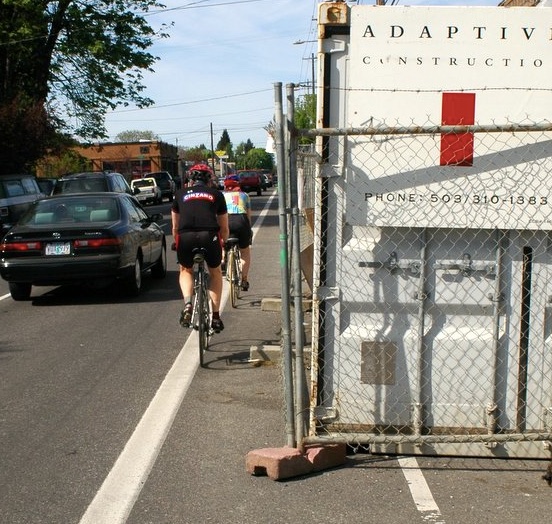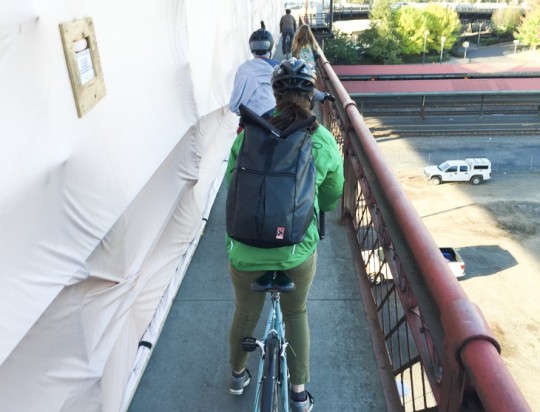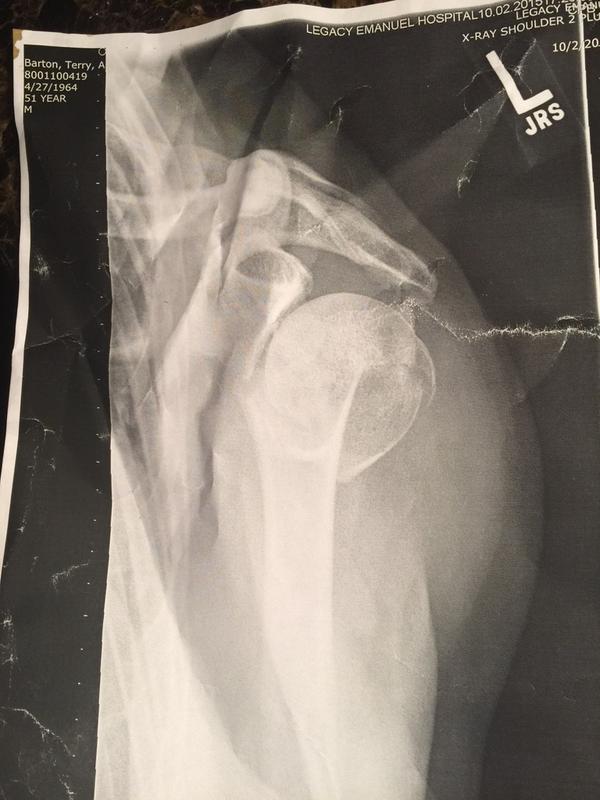work zones
Heads up: Paving project impacts bike traffic on Terwilliger
A key cycling route in south/southwest Portland is getting repaved and the work zone detour is causing headaches for some riders. The Portland Bureau of Transportation is grinding the pavement and laying down a smoother surface on Terwilliger between Capital Highway and SW Bancroft. PBOT says the project will last through June 24th. Reader Andrew … Read more
PBOT now has a manual for creating safer work zones
No excuse for dangerous work zones.
See PBOT’s work zone bikeway policy in action
Hopefully someday it’ll happen without being triggered by a citizen.
#WorkzoneFTW? City may require walking and biking routes around building sites
But the draft policy stops short of saying that walking and biking are always higher priorities.
ODOT hosts event to highlight bicycle access through work zones
Get an up-close look at the new “bicycle channelization devices.”
#WorkZoneWTF: Advocates want city ordinance to ensure safe passage through work zones
In a growing city, work zone safety is more important than ever.
Checking in on Broadway Bridge painting project work zone and closures
The closures will continue until the paint improves.
Detour done right: 21st and Belmont shows how construction zones should work
We’re happy to take a moment to recognize a detour that the city has handled beautifully.
Broadway Bridge updates: A broken shoulder and upcoming closure
With such narrow paths, a collision was bound to happen.
Here’s the latest on Broadway Bridge path closures and obstructions
Unpredictable sidewalk closures and scaffolds that narrow the bikeway have Broadway Bridge users on edge.
In letter to PBOT, BTA says Williams Ave work zone has led to injuries
BTA goes public with letter that says PBOT is not doing as much as they should to keep work zones safe.


